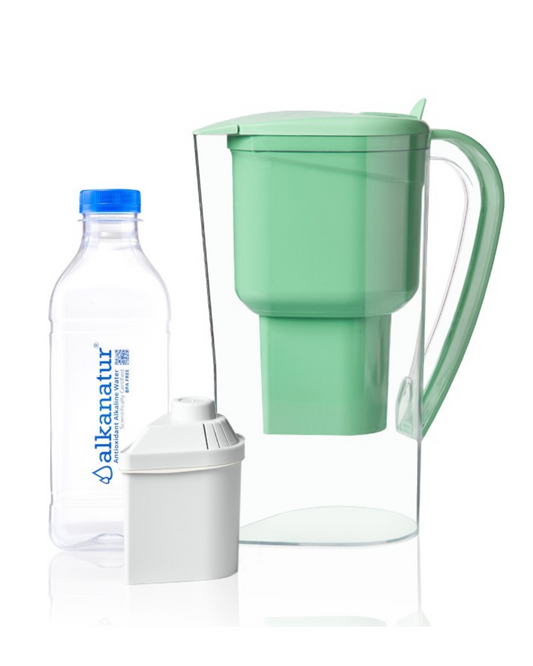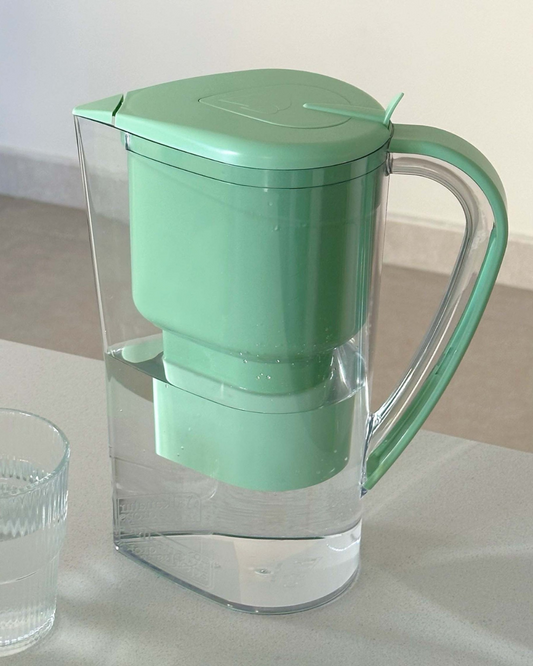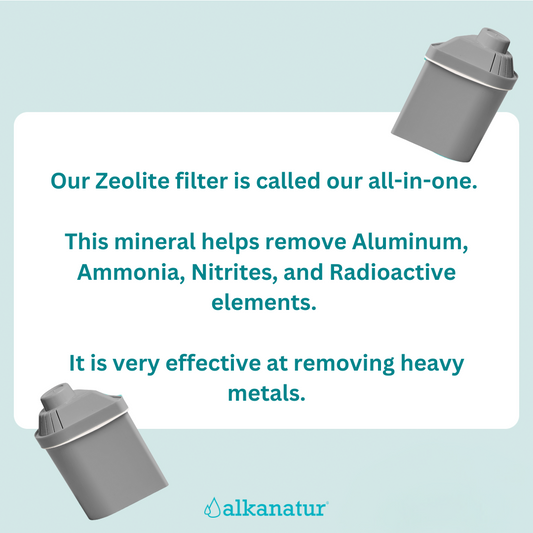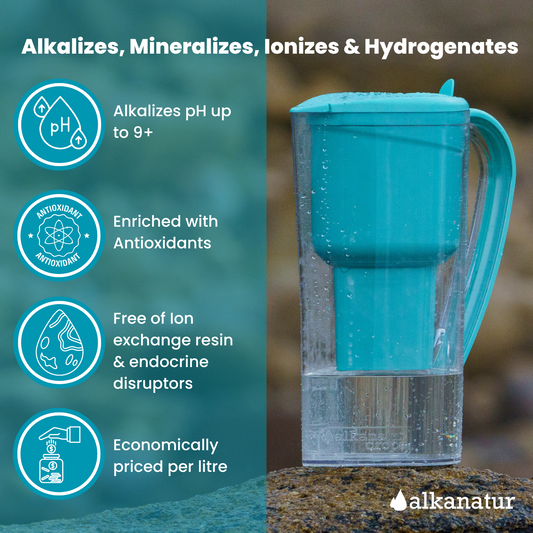Nowadays, most of the food we consume leaves acid residues in our body. Like the effect of acid rain on a forest, unbalanced pH levels over time cause many health problems.
These are some of the first signs of excess acid in the body:
• Fatigue and morning migraine.
• Difficulty to concentrate and memorize.
• Irritability.
• Skin that is too greasy to wake up, sweating due to a slight effort.
• Bad breath and whitish tongue in the morning.
• Indigestion. Wake up several times during the night.
• Body pains, muscle stiffness.
How to recover the pH balance?
The fulfillment of a balanced diet can help. If the levels are too acidic, increase the amount of fruits and vegetables that we eat. Drink 2-3 glasses of alkaline water a day. Alkaline water helps to get rid of accumulated acid wastes much more quickly and, among other things, in a matter of a few months helps to regain healthy weight. If the levels are too alkaline logically increase acidic foods. The idea is to achieve a balance.

Acid and alkaline foods:
Food can be classified as acidic or alkaline. Alkalines are soluble salts and acids are corrosive agents that are difficult to combine with other substances. A balanced diet should contain 40% acidic foods and 60% alkaline foods. Here is a brief list of acidic and alkaline foods:
Very alkaline foods
Bananas, dates, figs, prunes, dried fruits, raw almonds, avocados, green beans, beets, cranberries, carrots, grapes, pomegranates, plums, raspberries, spinach.
Neutral fats
Olive, almond, avocado, coconut, cottonseed, safflower, soybean, sunflower, nuts.
Alkaline foods
Alfalfa, apple, fresh apricot, artichoke, broccoli, Brussels sprouts and normal cabbage, melon, cauliflower, celery, cherries, raw chestnuts, coconut milk, fresh sweet corn, cucumber, eggplant, garlic, ginger, currant, grapefruit, raw horseradish, leeks, lemons and their crust, lettuce, mango, watermelon.
Very acidic foods
Alcohol, artichoke root, barley, bread, buckwheat, coffee, cereals, custard, medicines, all kinds of flours, dry ginger, honey, dried lentils, millet, oats, peanuts, rice, rye, soybean bread, sorghum, noodles and other pasta, sugar cane, raw beets, tobacco, nutmeg, wheat, meat, fish, chicken.
Acidic foods
Asparagus, dried beans, cashews, dried coconuts, concentrated cranberry juice, egg yolks, jellies and preserves, sweeteners, sweetened jams, sweet grapes, pasteurized dairy products, dried peas, tofu, boiled chestnuts.
Acid fats
Butter, cream, margarine, lard.

Keep the balance
All natural foods contain both acidic and alkaline generating elements. In some, acid generators predominate and in others, alkalis. There is a condition called alkalosis. It can occur when body fluids become too alkaline (pH> 7.45). Clinical symptoms of alkalosis include muscle spasms, diarrhea, cramps, lack of blood supply to the brain, dizziness, euphoria, paleness, confusion, decreased mental capacity, incoherent speech, tremors.
On the other hand, high levels of acidity also have their variations, including a condition called acidosis. Among other symptoms, metabolic acidosis can lead to loss of calcium. In a study conducted in 2006, researchers in Sweden found that too much acid in the body can also cause loss of renal magnesium. In turn it could lead to a shortage of magnesium (Mg), causing conditions such as migraines, osteopenia, osteoporosis and other ills.
1. The root vegetables.
Thanks to their healing yang nature, these foods have an important role in traditional Chinese medicine and are richer in minerals than many other vegetables. They are radishes, especially black, red or white, beetroot, carrot, turneps, horseradish and kohlrabi. Ready to eat after 15-20 minutes steaming, the roots help to satisfy hunger and feel better founded.
2. The cruciferous vegetables.
These are the vegetables that we all know and appreciate, even more delicious with only a small amount of healthy homemade pesto. They are for example broccoli, cabbage, cauliflower or Brussels sprouts.
3. The leafy vegetables.
These include kale, turnip greens and spinach, which is perhaps the best option. It is known for its high content of vitamin K and folic acid. Spinach is full of vitamins, minerals, phytochemicals, antioxidants and fiber, which help improve digestion and vision.
4. Garlic.
Garlic is a truly miraculous food that appears at the top of the innumerable lists of foods that promote general health, here we will not make an exception. Other qualities are its ability to promote cardiovascular and immune health by lowering blood pressure or cleaning the liver. Recent studies have shown that even more these qualities are accentuated when the garlic has sprouted. So do not throw away the green twig that sticks out of the tooth.
5. Cayenne pepper.
As part of a family of powerful tropical peppers that contain enzymes necessary for endocrine function, cayenne pepper is one of the most alkalinizing foods. It is famous for its antibacterial properties and is a rich source of vitamin A so it is a useful tool in the fight against harmful free radicals that lead to stress and illness.
6 Lemons.
Lemons may be the most alkalizing food. As a natural disinfectant they can heal wounds while providing effective and immediate relief to hyperacidity or viral states, as well as coughs, colds, flu or heartburn. The lemon also helps to energize the liver and promote detoxification.
Therefore it will not be a bad idea to think about what we are going to put on the plate at the next meal. Only the application of the ancestral maternal advice “eat the vegetable” can be a first step to achieve good health.









